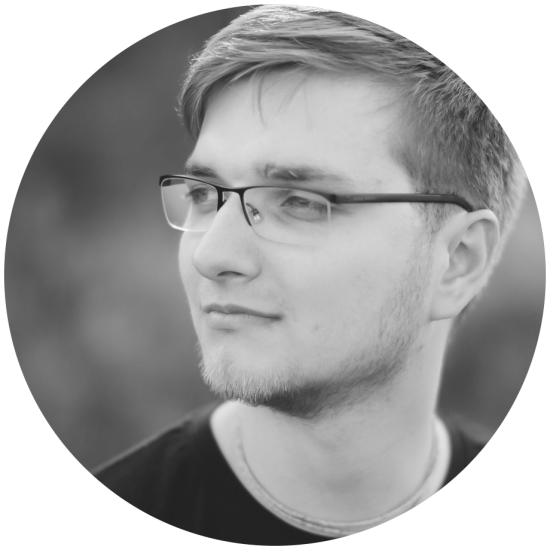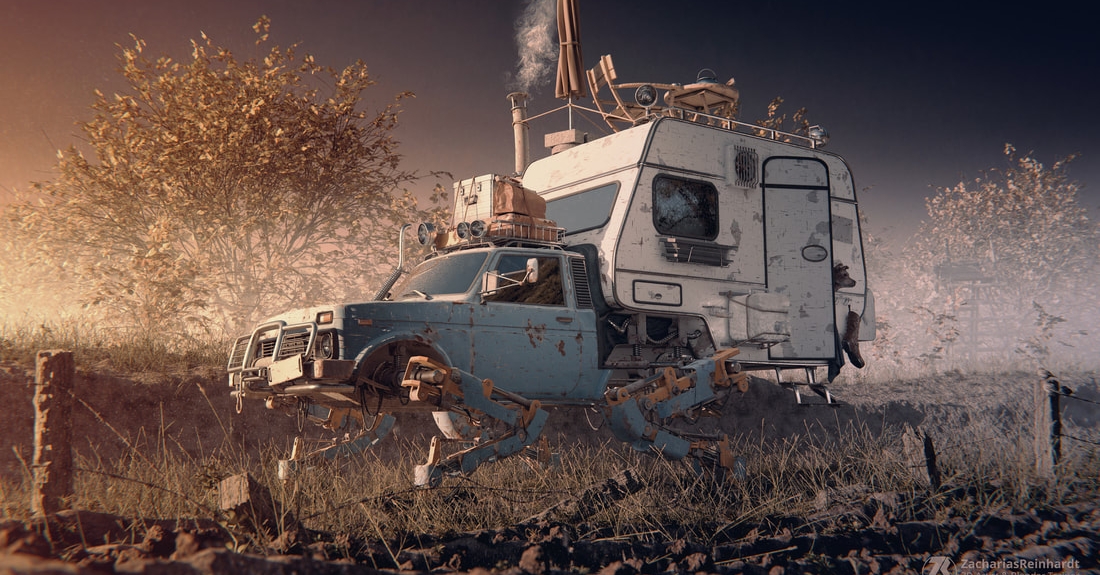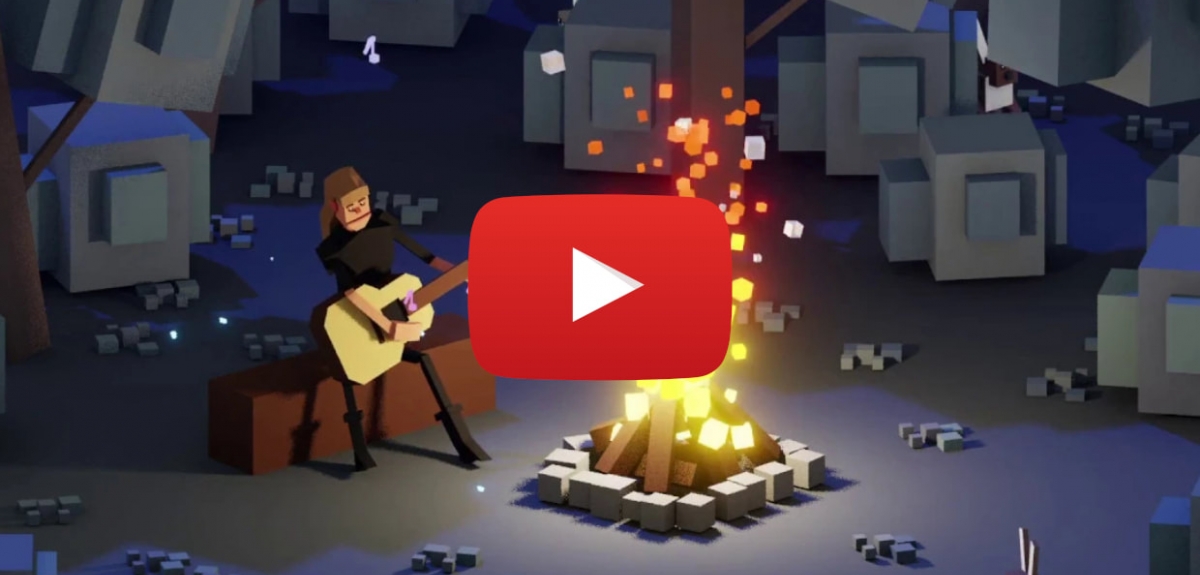Zacharias Reinhardt
Zach has been one of the artists in the industry that I look up to a lot. He is a constant source of inspiration and a fresh perspective. A very prolific artist with a lot of hidden tricks on his belt. His generosity through his tutorials is what I also admire a lot about him.
In this interview, let's get to know the man behind the Weekly CG Challenge and dive deeper into his thought process.
How did you get started with Blender?
My brother introduced me to the software back in 2004 (version 2.36). After I realized that I can visualize my imagination in front of my eyes with this tool and 3D tools in general (I used cinema 4d for quite some years before I fully switched to blender in 2009/2010), I totally fell in love with 3D
What is the main source of your inspiration?
Everything! If you look at everything with conscious and analyzing eyes, you build up a visual library of bits and pieces in your head which you can put together as stories and artworks later on. Certainly, I also get a lot inspiration from other artists, mainly from Artstation.com.
Your strongest and weakest points as a 3D artist?
My strongest points are probably flexibility, meaning that I know how to solve different problems with often unusual workflows and that I know various aspects of 3D quite good. My weak points are probably the things that I don't like to do or don't have that much experience with, e.g. archviz or product visualization.
If you look at everything with conscious and analyzing eyes, you build up a visual library of bits and pieces in your head ...
The most challenging project you ever did in Blender?
Well, I did some very challenging client projects, but I think the most challenging project was SculptJanuary. Sculpting 31 sculptings in 31 days. I was dead at the end but had gained so much experience which I still benefit from today. And I did it two and a half time.
As a 3D artist, what was your biggest success?
I think my biggest success is the fact that I'm making a living with the things I love doing. That means working with blender as freelancer, teaching blender, and selling my courses online.
What is your dream project to work on?
Atm to write and illustrate a children's book (I also love digital drawing and painting). And I also have some low poly animations in mind, on which I would and hopefully will work on in the near future.
Your most-loved passion aside from 3D Graphics?
Cooking. I'm vegetarian and ever since I love cooking. Nearly every day, when I come home from work, I cook the dinner for my family. Since I nearly never use any recipes, I cook by intuition and this is a bit like meditation. Calming down and relaxing. I also love to play with my two sons. Building Lego vehicles with them is the best. :)
What is your favorite aspect and feature of Blender?
I think the best “feature” in blender is its flexibility and feature set in one software. It is super handy that you can do an entire 3D project in Blender alone, if needed. But if we are talking about a specific feature, I like the sculpting tools a lot (although they could be improved in some areas).
If you had the chance, what would you change in Blender to make it better?
Blender has a lot great features to offer, however the workflows on how to use these features are often not really intuitive. Like if you want to add a texture brush for sculpt mode, you have to add a new texture slot in the tool shelf, then switch over to the properties editor, open the texture, then switch back to the toolshelf and adjust the texture settings etc. This is something you would never find out just by trial and error. So I would definitely make some features more straight forward to use. And make Blender more smooth to use when you're sculpting on a very high poly object.
I think my biggest success is the fact that I'm making a living with the things I love doing.
If there's one thing you would teach your younger self, what would it be and why?
Definitely to learn the fundamentals in human anatomy (for sculpting and drawing). This is something I still struggle with today, since I have much less time to learn new stuff, than when I was a kid.
What is your workflow when creating 3D artworks?
For my personal artworks, it’s important for me, that my artwork is delivering an inspiring story, to invite people to dive deeper into it. I start with collecting inspiration and ideas. For that I consciously looking at things in the world around me and often use these as parts of my artworks. Also, Artstation and Pinterest are great websites to collect ideas and inspiration.
After I have a clear idea what I want to do, I usually do a sometimes more sometimes less detailed sketch/concept drawing to get a good idea what I want to present visually in my image. This is especially helpful, if you create vehicles, characters, creatures etc. which are not existing in the real world. Also, I collect reference images for all the details I have to model or images which just delivering a certain mood (e.g. as inspiration for lighting and compositing later on). Then, I create a blockout for my scene. With very simple shapes I quickly put together what I want to show. This is one of the most important steps, to make sure, everything fits together in the long run. Also, this provides a good overview of objects you have to create. So it doesn’t feel like you have to work forever on the piece and never know how much you still have to do. Also, this is perfect to choose the right camera perspective and also how the objects are placed in the scene. You don’t waste your time modelling something, which you later throw out of your artwork.
All objects are done in just a few minutes and then it doesn’t hurt if you delete it and try something else. In the next step I replace all the low poly objects with high poly versions. The cool thing here is, that you always see the big picture, since you have your blockout, that slowly becomes more detailed. After all the details are done, I add a basic lighting setup, which is important to see the behaviour of the materials, while creating the shaders and textures in the next step. I try to achieve as much as I can with procedural and seamless textures, since they are most flexible and can be used for many objects. To finalize my artwork I create the finished lighting setup. Here I try to keep it as simple as possible. I use HDRI’s a lot, which are adding this nice natural look to your scene. Then it’s time to render it out and do the compositing and post fx in Photoshop.
Throughout the process it is very helpful to do some test renderings in low resolution from time to time and do quick overpainting and compositing. This helps to get an idea, if you are on the right way for your final artwork and sometimes you get some new ideas.
What is your hardware and software setup?
Hardware:
Notebook:
- CPU: Intel Core i7-4710HQ @ 2,50 GHz
- GPU: NVIDIA GTX 850 M
- RAM: 16 GB
Workstation:
- CPU: Intel Core i7-7700K @ 4,20 GHz
- GPU: NVIDIA GTX 1080 Ti
- RAM: 32 GB
Software:
- Blender
- Photoshop
- Premiere Pro
- After Effects
- PixPlant
- Procreate
Of the three products you have produced, which one is your favorite? What are the important lessons you've learned during the creation process?
Well in fact I have created about 7 products in the past years. But from my recent products I think the video training "Movie Scene Creation" is still my favourite. Because it has such a big variety of topics it covers. Important lessons i learned: If you show how to build something particular in 3d, create the finished scene first and then create the tutorials. If you want to show the building process, make sure that you have tested your workflows multiple times first. In general it was very important to do the research and testing upfront, to make sure to show the best possible workflow. Also, short and compromised tutorials, in which you don't show every click, are much more convinient, if your content is adressed to advanced users.




